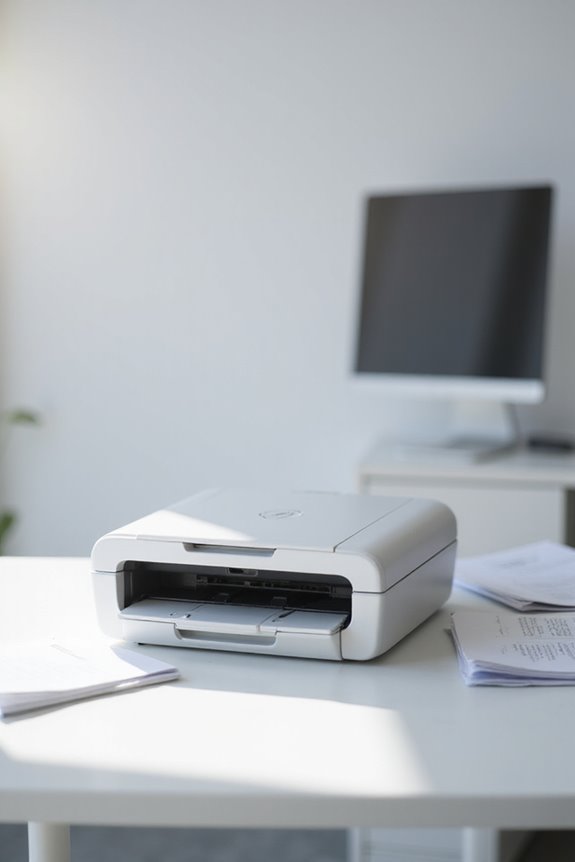To effectively use scanner data security features, we should implement AES encryption with a 256-bit key for maximum protection. We can enhance access controls through multi-factor authentication and regular audits of access logs. Utilizing secure protocols like SSL/TLS during transmissions safeguards data integrity. Additionally, configuring scanners for sensitivity detection guarantees we identify sensitive information accurately. Finally, automating vulnerability detection keeps our systems secure and compliant. There’s more we can explore to optimize these features further.
Key Takeaways
- Configure scanners to detect sensitive information using custom patterns and regex for accurate identification.
- Enable AES encryption with a 256-bit key for maximum security of scanned documents.
- Implement multi-factor authentication and biometric verification for secure user access to scanning features.
- Utilize secure protocols like SSL/TLS during data transmission to protect against interception.
- Schedule regular audits of access logs to monitor and address unauthorized access attempts.
Implementing AES Encryption for Document Security
When implementing AES encryption for document security, it’s vital to understand its key features and benefits. AES uses symmetric key encryption, with key lengths of 128, 192, or 256 bits. Opting for a 256-bit key maximizes security, especially for sensitive documents. Secure key management is essential; keys must be generated and stored safely to prevent unauthorized access. Another important practice is key rotation, which limits the time any single key is exposed, enhancing overall security. Additionally, integrating AES encryption algorithms directly into document scanners encrypts data instantly upon scanning, guaranteeing protection both in transit and at rest. Together, these features not only safeguard documents but also guarantee compliance with data protection regulations, giving us peace of mind. Furthermore, employing scanners with robust encryption features ensures that electronic protected health information (ePHI) is adequately secured throughout the scanning process.
Enhancing Access Control and User Authentication
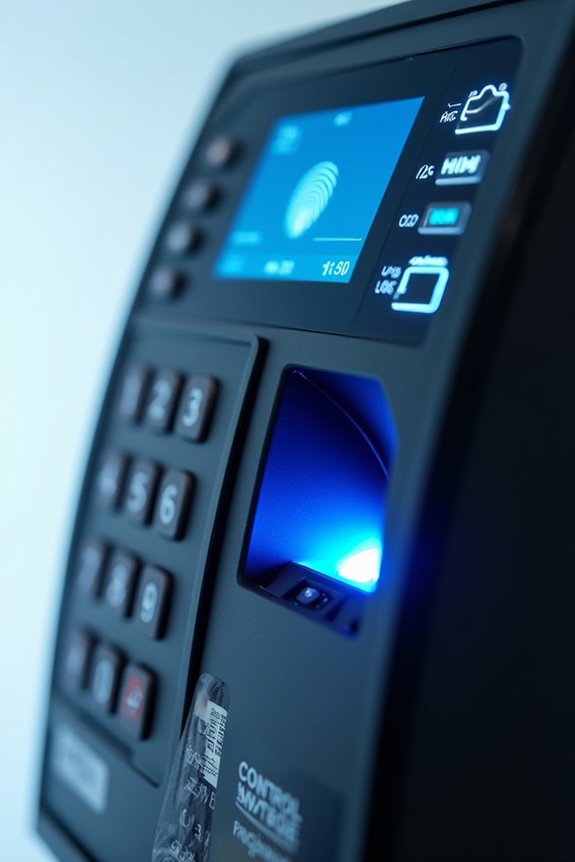
To enhance access control and user authentication for document scanners, implementing robust security measures is vital. One effective method is multi-factor authentication, which combines two or more security methods. Using biometrics like fingerprint or retina scans greatly strengthens security against unauthorized access. Additionally, employing role-based access guarantees users only access documents relevant to their specific roles, minimizing data leaks. We can also enhance flexibility by integrating RFID cards with biometric verification. Administrators can customize roles and access rights, guaranteeing compliance with data security policies. This combination of multi-factor authentication and role-based access not only protects sensitive information but also streamlines user management. Regular audits of access logs help identify and address any unauthorized attempts. Moreover, ensuring that the scanner supports OCR technology can further enhance document security by enabling searchable PDFs and controlled access to sensitive data.
Securing Network Connections and Communications
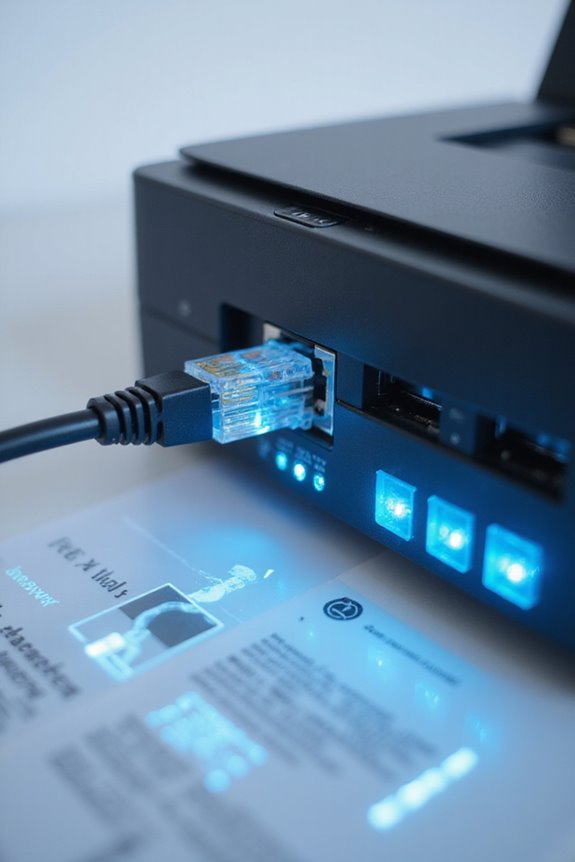
Securing network connections and communications is essential for guaranteeing the integrity and confidentiality of data transmitted from scanners. We should utilize secure protocols like SSL/TLS, which provide robust encryption for our communications. This guarantees our scanned data remains confidential and intact during transmission. Implementing AES with 128-, 192-, or 256-bit keys enhances data protection further. For secure key exchange, we can rely on RSA asymmetric encryption. To maximize security, it’s crucial to employ encrypted tunnels or VPNs, especially when accessing scanners over public networks. Additionally, we need to limit exposed network ports and continuously update firmware to combat vulnerabilities. By adopting these measures, we greatly reduce the risk of unauthorized access and data breaches in our scanning operations. Furthermore, using a reliable UPS unit with built-in surge protectors can further ensure that your scanning devices are protected against power surges during operation.
Configuring Scanners for Sensitivity Detection
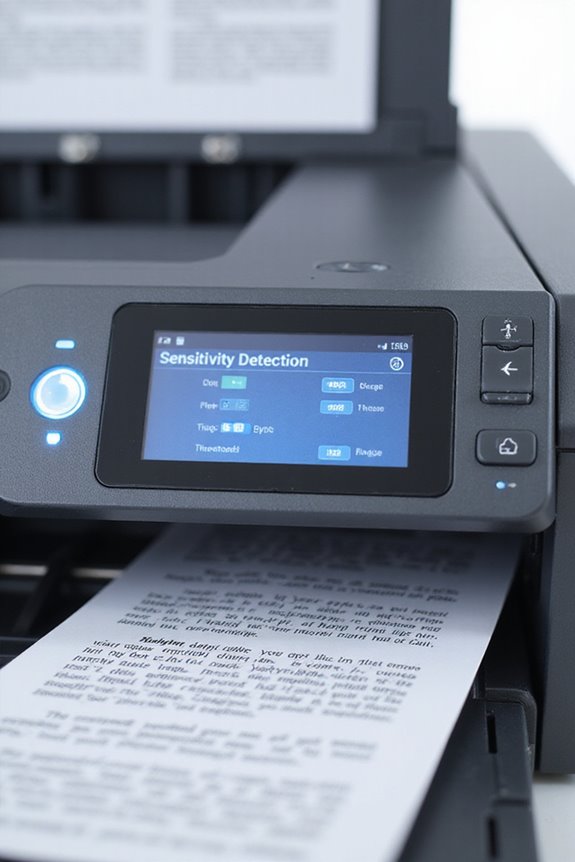
After ensuring secure network connections, we can turn our attention to configuring scanners for sensitivity detection. We should begin with custom scanner configurations tailored to our organization’s specific patterns of sensitive data. Activating these scanners is essential, as only enabled ones perform effectively. Utilizing regex for sensitivity detection patterns allows us to pinpoint specific data types, such as API keys. We must also employ clear naming conventions and assign severity levels for our scanners, facilitating better tracking. Adjusting scan jobs according to our scanning scope and frequency further enhances our detection accuracy. By continuously refining our detection rules, we can improve accuracy over time while dynamically responding to any changes in our data security needs. Additionally, selecting scanners with strong security features can significantly bolster our protection against unauthorized access to sensitive documents.
Automating Vulnerability and Sensitive Data Detection
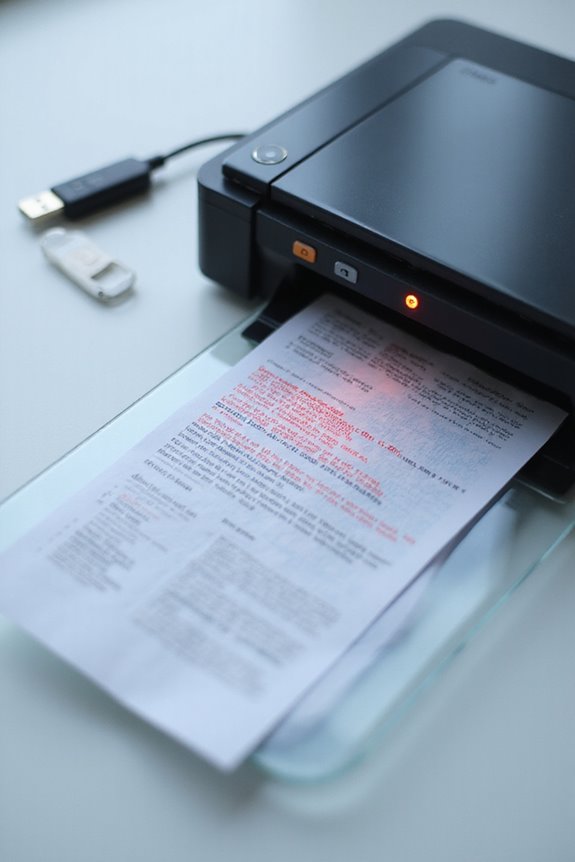
While we navigate the complex landscape of cybersecurity, automating vulnerability and sensitive data detection becomes essential for organizations seeking to safeguard their assets. Automated scanners conduct thorough vulnerability assessments by comparing IT assets against established databases like CVE and NIST. They identify issues such as open ports and weak passwords. In addition, these tools continually monitor environments, flagging vulnerabilities and mapping sensitive data across all storage locations. With automated remediation suggested for identified risks, we can streamline our response, ensuring quick patch deployments and configuration changes. The ability to document vulnerabilities over time also enhances our strategic planning. By adopting these automated features, we can not only reduce manual effort but also improve the accuracy and effectiveness of our security measures. Furthermore, integrating cloud storage capabilities can enhance the accessibility and security of sensitive documents during the scanning process.
Ensuring Compliance With Data Governance Practices
To guarantee compliance with data governance practices, we need to recognize the importance of aligning our secure scanning processes with rigorous regulatory requirements. By implementing data classification strategies, we can make certain that only authorized personnel access sensitive scanned data, adhering to the minimum necessary principle. Regular compliance audits help us monitor our practices, confirming that we maintain confidentiality, integrity, and availability of the data. It’s crucial to keep thorough documentation of scanning configurations and policies, which supports our compliance audits and provides clarity. Additionally, we must implement unique user identification and strong authentication mechanisms for secure access. Remember, consistent monitoring of our processes mitigates risks and keeps us prepared for any potential compliance challenges ahead. Moreover, ensuring that our systems comply with regulatory standards is essential to avoid legal repercussions and enhance data security.
Frequently Asked Questions
What Tools Can I Use to Monitor Scanner Network Security?
For effective scanner monitoring techniques, we should consider network security tools like FireMon, Qualys, and Tenable Nessus. They enhance our ability to detect vulnerabilities, guarantee compliance, and maintain a secure network environment together.
How Can I Ensure Scanners Comply With Industry Standards?
To guarantee scanner compliance with industry regulations, we need to implement encryption, access controls, and regular audits. By adopting best practices, we can protect sensitive data and minimize our risk of non-compliance.
What Are the Risks of Using Unsecured Wi-Fi for Scanning?
When we use unsecured networks for scanning, we risk data breaches. Sensitive information can be intercepted, leading to unauthorized access. We should always prioritize secure connections to protect our valuable data from potential threats.
Can I Remotely Manage Scanner Configurations Securely?
Yes, we can securely manage scanner configurations through remote access, ensuring secure connections using encrypted protocols. By applying best practices like strong authentication and role-based access, we minimize risks while maintaining effective management.
How Often Should Sensitive Data Scans Be Conducted?
We recommend a sensitive data scan schedule that varies based on system criticality. Critical systems should be scanned weekly or bi-weekly, while less critical ones may require quarterly or semi-annual assessments to guarantee ongoing protection.

